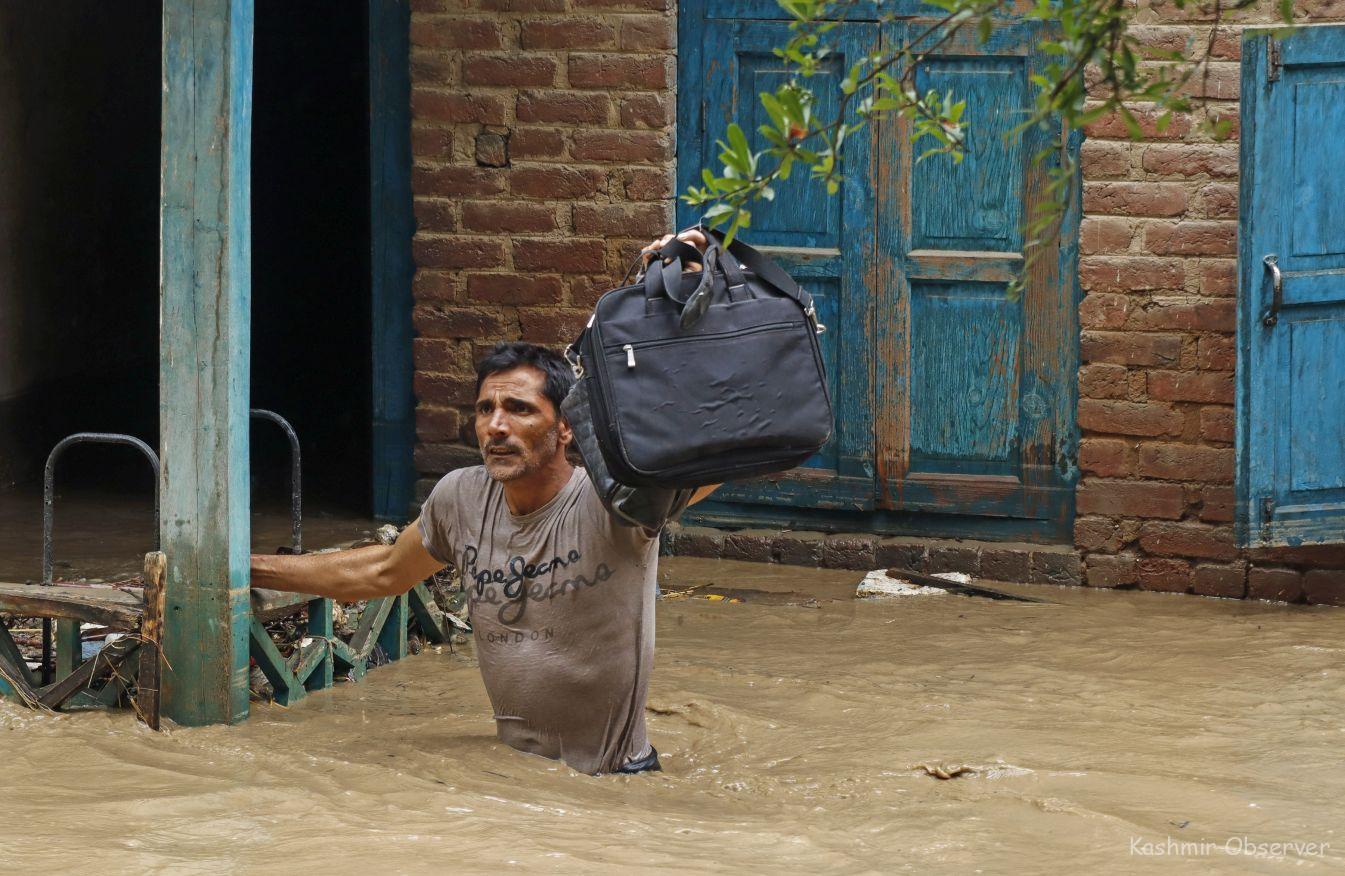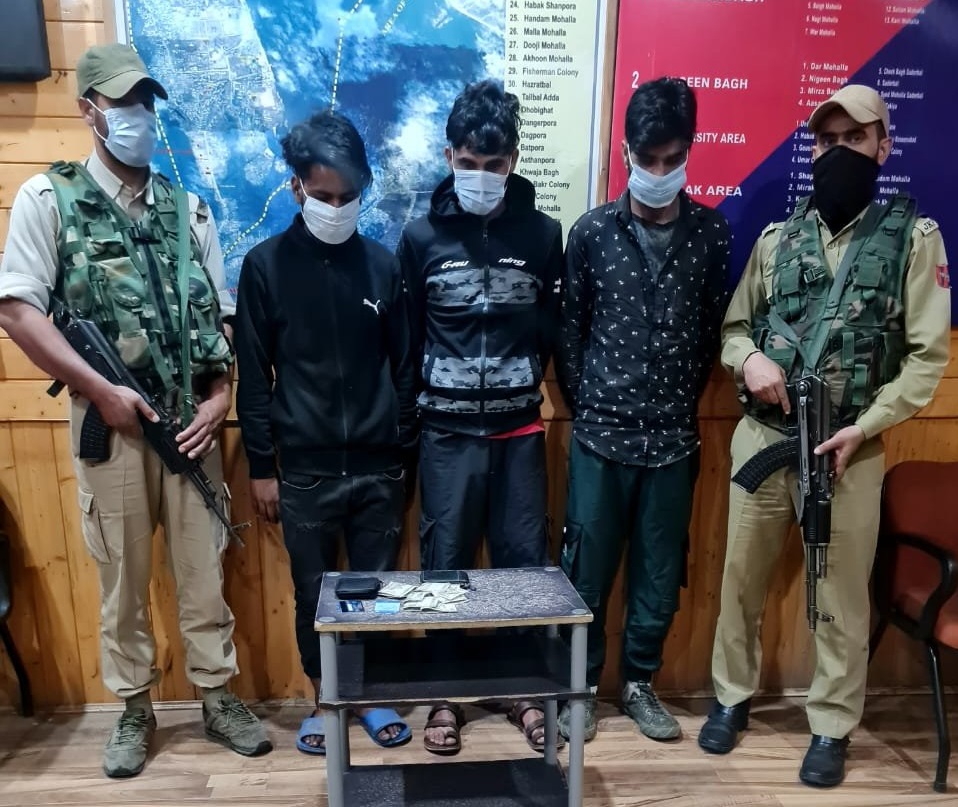
By Faizan Arif
BOTH Kashmir and Jammu regions had been experiencing rather unnerving wet weather since the 18th of June. Emblematic of the weather unpredictability, people were quick to wear their best unpredictable gears. In Kashmir, the age-old Kashmiri truism of keeping the Pheran ready by the hook, on-the-go, had new takers. Higher reaches recorded heavy snowfall, at the same time, plains were lashed by heavy spells of rain. Temperatures dropped untypically. The quiet Jhelum went tempestuous, bringing with it the currents of the turbulent memory of the 2014 floods.
These switches from high to low temperatures, from spring’s sprint to summers and from uncanny rains to unbearable sun – what explains these volatile fluctuating temperatures?
In today’s day-and-age, weather models developed by scientists help in knowing the future weather in advance. However, regarding the recent spell, weather models were divided in the forecasts.
As the weather event got closer, ambiguity continued among weather models. However, it got clear that Jammu and Kashmir was in for a major spell. Models had also forecasted a significant drop in day temperatures.
On 21 June, Srinagar recorded a maximum temperature of 15.0 degrees Celsius, which was 14.2 degrees below normal. In 2015, Srinagar recorded a maximum temperature of 15.2 °C. This broke the previous record as Kashmir registered the coldest June day since atleast 1975. Temperatures remained similar in other parts of the Valley. In Kupwara, the maximum temperature was 15.5 degrees below average.
A temperature of 15.0 degrees Celsius is common in February in Srinagar. So temperatures were quite comparable to a sunny day in Chillai-Khurd — a period of 20 days after Chillai-Kalan, the 40-day harshest period of cold.
As the evening of 21 June set in, it started pouring heavily. By the morning of 22 June, water levels of several Nallahs had crossed the ‘danger mark’. Jhelum, later in the day at Sangam and Ram Munshi Bagh crossed the ‘Flood Declaration’ mark. From a drought-like situation a few days ago, it turned out to be a Floody Wednesday.
Drought, cold and flood are seemingly incongruent. They don’t get along and can rarely ever appear together. But climate change has made the impossible possible. Directly or indirectly, such weather events are linked to climate change.
In 2014, Kashmir witnessed one of the worst floods in its history. In 2015 again, the water level of Jhelum crossed five times above the ‘flood declaration’ level. On the complete opposite side of the pattern, in 2016, a prolonged dry spell lasted for 4 months.
Precipitation patterns have also been haywire. The otherwise driest of November is turning out to be the wettest month. The wettest season, Spring, this year saw the lowest rainfall in the last 2 decades.
In 2018, it snowed heavily in the first week of November. In 2019, it snowed even more heavily in November. Last year, on 23 October 2021, it snowed in south Kashmir plains. All these events caused a huge loss to people, especially people associated with the agricultural and horticultural sectors.
Climate change isn’t measurable. However, it is quite tangible when we look at climate changes over years and compare the weather we used to see in the 1980s and the weather we are experiencing from the last 10 years. Climate change isn’t confined to bringing hot and warm weather only. It can bring the worst floods, extreme cold, unseasonal snow and the list goes on. Don’t be surprised if it snows in the plains on a June day sometime in the future.
Climate change is directly linked to how humans have treated and are treating this earth. The carbon dioxide emissions are rising, heating the world and thus the world is witnessing never-before-seen events.
Such things were never the norm in Kashmir’s climate history. Not only are these extreme events going to happen again but their frequency is also going to increase. Keeping financial losses aside, this also puts the lives of everyone in danger. The weather events that climate change could trigger won’t care for anyone’s luxuries or privileges — they’re coming for all of us.
There’s a lot that needs to be done at the level of policy decisions. The global community needs to be more alert and adept at tackling climate change issues. Developed nations have to take responsibility and do their share to discourage production patterns that aggravate climate change.
They say personal is political; in the case of climate change, indeed, the political is personal. Climate change is going to come for us all. Its effects aren’t going to be restricted to only one community. Therefore, we must all mobilise and advocate for climate sensitive policies. The government of Jammu and Kashmir must ensure that environmental concerns don’t remain restricted to the events and seminar alone. They must be taken up in spirit especially in an eco-sensitive place like Kashmir which has the burden of tourist influx and rapid industrialisation. Climate change advocacy must be instilled in the young and the fresh.
We need to make our voices heard by those in power. It will make the government take action and spend more on reducing the effects of climate change. Awareness programs, TV debates and workshops on climate change should be organized. This will help people to learn and understand better about it.
However, we also have an active role to play to mitigate the climate crisis. To begin with, we need to educate ourselves. Today we have Google on which thousands of articles regarding climate change are available. One needs to go through some of them and learn about the dangers of climate change and the things that are triggering it. The knowledge gained must be shared with others.
Personal eco-friendly approach must be followed and instilled in everyone. Shopping and consumption patterns need to be kept in check. We should opt for environmental friendly and sustainable options in clothing, food and every choice we make. Small changes such as pooling for commute, switching off the lights when not in use, closing the tap, not using plastics, using sustainable sippers and straws; these are some of the few easy things we could do to make a huge difference.
Such small measures by an individual can help in mitigating the deadly effects of climate change. Better act now than tomorrow.
We’re in for a lot of surprises as far as weather is concerned. All unseasonal occurrences are often connected with mythologies of impending doom. We can’t be sure of any calamity but one — climate change.
Views expressed in the article are the author’s own and do not necessarily represent the editorial stance of Kashmir Observer
- The author is an independent Weather Forecaster, better known as ‘Kashmir Weather’ across social media
Follow this link to join our WhatsApp group: Join Now
Be Part of Quality Journalism |
Quality journalism takes a lot of time, money and hard work to produce and despite all the hardships we still do it. Our reporters and editors are working overtime in Kashmir and beyond to cover what you care about, break big stories, and expose injustices that can change lives. Today more people are reading Kashmir Observer than ever, but only a handful are paying while advertising revenues are falling fast. |
| ACT NOW |
| MONTHLY | Rs 100 | |
| YEARLY | Rs 1000 | |
| LIFETIME | Rs 10000 | |










